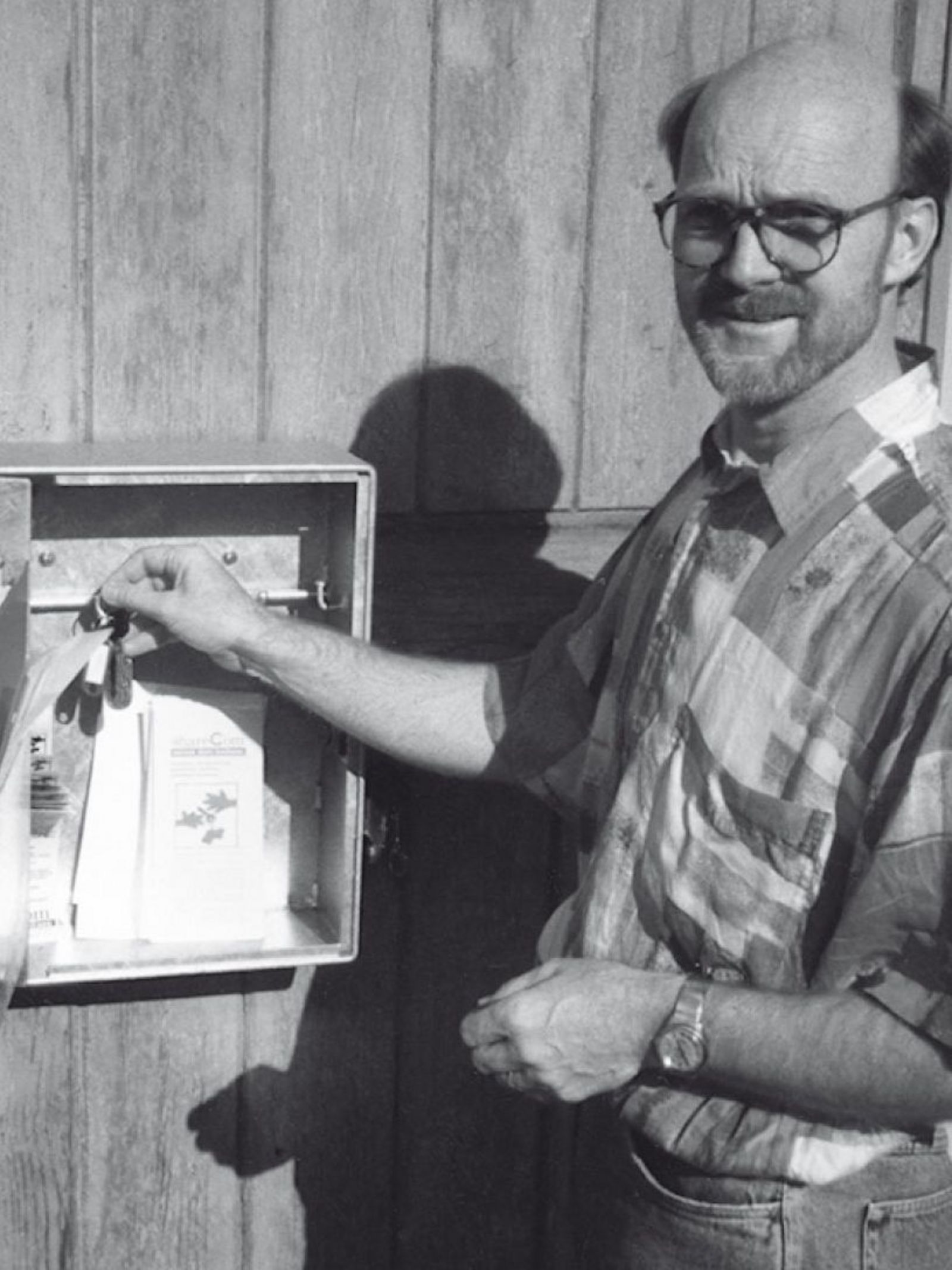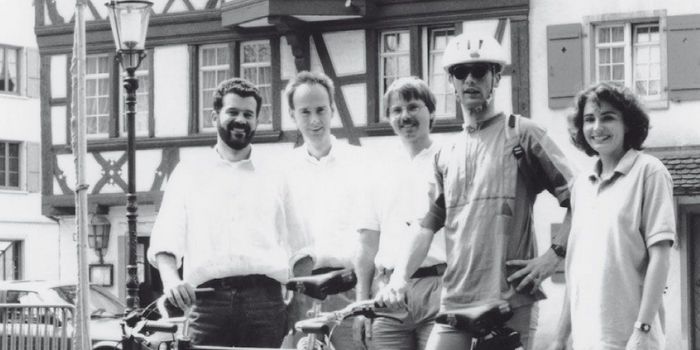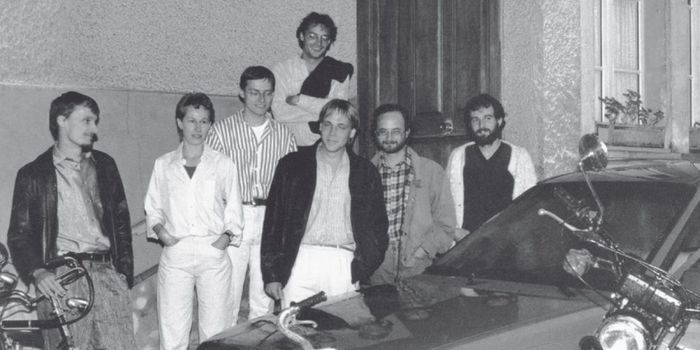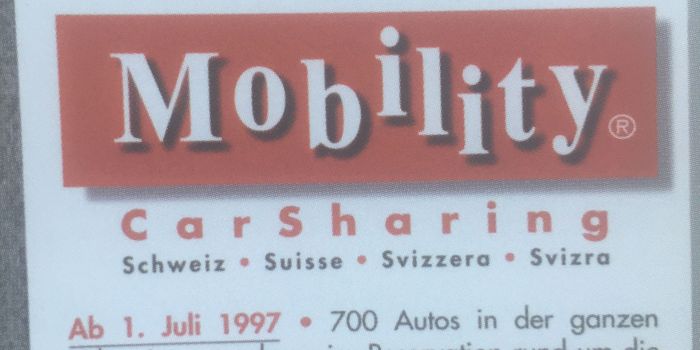My first months of car sharing in 1987 were lonely. I spent the time moving around central Switzerland – shared and driven by nobody but the eight ATG founders. Their aim was to make sure I was used to the full rather than left standing around, as founding father Conrad Wagner explained to me, mainly for reasons of environmental protection and sustainability.
Three years later I already had 38 red colleagues, so by then I was part of a real fleet. It really is quite exciting for me when I consider that “my” Mobility now has more than 3’100 vehicles at 1’500 locations used by more than 220’000 people throughout the whole of Switzerland. I’ve long since retired myself of course, but from my garage I like to keep up to date, and I follow what’s going on with great interest.
From paper to app
Anybody wanting to drive me in those early days had enter their reservation by hand in a list and note down the distance travelled in a logbook. The whole business with the keys was rather cumbersome, too: they were left hanging in a box on the wall of the building, and the box itself required a separate key. Complicated, right? Telephone reservations were introduced in 1993 and online bookings came in around the turn of the millennium. Anyone wanting to reserve one of my fleet colleagues today can simply tap on their mobile phone display. Even Bluetooth is expected to be available soon. I have to be very careful to keep up with all these digitalisation advancements at my age; but after all, the Swiss word “Kadett” actually means “voluntary traffic control assistant” – so it does involve a certain responsibility!

From ATG to Mobility
From April 1997 onwards my colleagues bore the “Mobility” inscription on their fenders – a name I found inspiring right from the outset. The cooperative was created from the merger between ATG and Zurich ShareCom, which had launched a car-sharing model at the same time. So there was an impressive “starting capital” of 760 vehicles and 17’400 customers.

From solo performance to networking
As I mentioned, I was out and about on the road for a few months working on my own for ATG in the early days. Under Mobility, my owners started to cooperate with some of the big “players”, as they say nowadays. “Networking” was the key strategic term. In 1998, for example, business car sharing was created in collaboration with Migros, and in 2006 the Click & Drive scheme was launched with SBB – which works entirely without a subscription. Other cooperation partners with illustrious names include the tariff association Libero, Swiss universities and colleges and the public transport sector’s Swisspass. As a classic car, I’m proud of this successful development. In fact I sometimes feel like getting back into the game again and having someone put my accelerator into action!
From petrol engine to e-car
For a long time “my” fleet was powered by petrol or diesel, whether in the town or the country. “Electric” and “hybrid” were at best catchwords for a long-term vision. But now everything is different. Back in 2011, Mobility got together with m-way, SBB and Siemens to put electric cars on the road – those colleagues of mine who you are silent and generate zero emissions. And guess what: within ten years at the latest, Mobility will be running electric cars only. This will protect the environment and ensure investments are made in sustainability. A great vision!
I nearly couldn’t shut my tailgate when I found out that there were now minibuses that are so smart you don’t even have to touch their steering wheel. Apparently, these self-driving vehicles are the thing of the future. In 2017, my owner started a pilot project with partners such as SBB with self-driving cars in Zug. Conclusion: we’re not quite there yet – with the emphasis on “yet”.
From pioneer to innovation driver
I’ve had to learn lots of fancy words to keep up with the constant expansion of Mobility. The innovative flair is so impressive, it sends shudders down my exhaust pipe every now and then. Want some examples? “Mobility-Flex” for the opening of car-sharing locations to order, “Pool car sharing” for business customers with their own vehicle fleet, “Mobility Go” for non-station-based car sharing in a free-floating system and “One-Way” for one-way trips from city to city. In fact, there’s virtually nothing you can’t do these days.
Share more, get more
In spite of all the innovation and the ongoing digitalisation processes: my owners have remained true to their founding values. The ShareCom credo back then – “share rather than own” – is as relevant today as it was then. Sustainable mobility solutions that reduce traffic volume and costs will continue to be a major focus in the future. For example, each one of my great-grandchildren – i.e. every Mobility car on the road today – replaces eleven privately owned cars. In addition, every Mobility user saves CHF 4’000 francs as compared to running a car of their own. The idea of the cooperative – that genuine community spirit – is still very much alive and kicking. And if people increasingly perceive car sharing as a lifestyle factor, I think that's a good thing – and we’re looking at a bright future.
Yours sincerely,
The 1987 Opel Kadett.








Your comment